Hickory Tussock Caterpillar
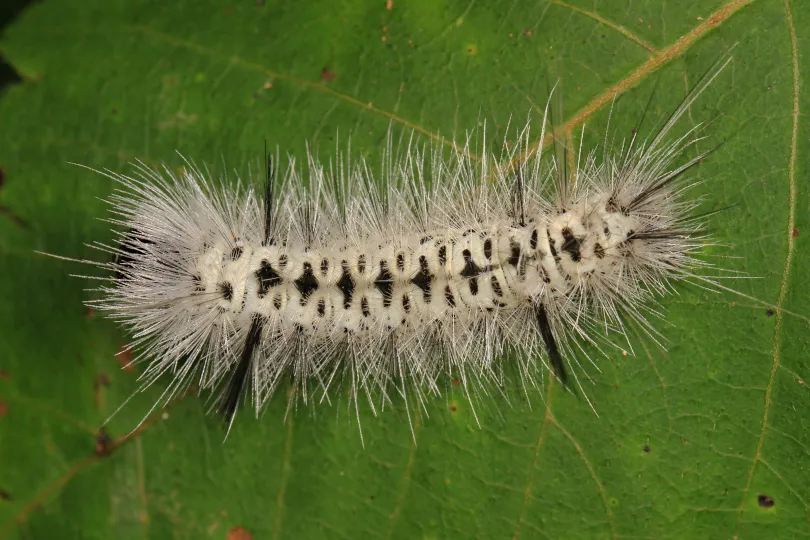
Image credit: Judy Gallagher. CC 2.0 license
 A couple of weeks ago my granddaughter was hiking in Putnam County, New York. She saw a fuzzy, 'cute' caterpillar crawling slowly along the trail. She snapped a picture, and then sent the picture to me. I thought it would be fun to find out what kind of caterpillar she'd seen, and to share that information with her. What I found was the animal featured at the top of this page, the hickory tussock caterpillar
A couple of weeks ago my granddaughter was hiking in Putnam County, New York. She saw a fuzzy, 'cute' caterpillar crawling slowly along the trail. She snapped a picture, and then sent the picture to me. I thought it would be fun to find out what kind of caterpillar she'd seen, and to share that information with her. What I found was the animal featured at the top of this page, the hickory tussock caterpillar
I soon learned my granddaughter was fortunate that she hadn't tried to touch the "cute" caterpillar.
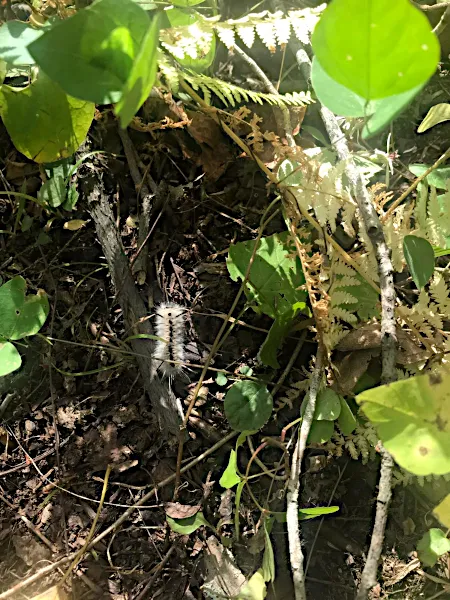
Picture credit: my granddaughter, used with her permission.
 The dramatic appearance of the Hickory Tussock caterpillar may draw our attention and perhaps please our eye. However, it is exactly the caterpillar's distinctive display that dissuades predators from stopping by. For, they know that taking a bite of this furry critter will result in excruciating pain. The caterpillar's furry spikes (called setae) are loaded with venom. And those spikes are designed to embed in the flesh.
The dramatic appearance of the Hickory Tussock caterpillar may draw our attention and perhaps please our eye. However, it is exactly the caterpillar's distinctive display that dissuades predators from stopping by. For, they know that taking a bite of this furry critter will result in excruciating pain. The caterpillar's furry spikes (called setae) are loaded with venom. And those spikes are designed to embed in the flesh.
Hikers Beware:
According to the Bangor Daily News, "The hairs of the Hickory Tussock caterpillar...can cause an allergic reaction...for some people..." Penn State Extension warns, that while reaction to contact with the caterpillar for most people results in a rash, for others there may be complications. In some cases, hairs may be ingested or embedded in the eye. In those instances: " immediate medical attention should be sought."
The website Butterflies and Moths of North America describes the caterpillar's range: "Nova Scotia to North Carolina mountains, west to Ontario, Wisconsin, and Texas."
Hickory Tussock Moth

Image credit: Melissa McMasters from Memphis, TN, United States. Used under a CC 2.0 license.
 This is the moth that will metamorphosize from the hickory tussock caterpillar. This moth is sometimes called the Hickory Tiger Moth.
This is the moth that will metamorphosize from the hickory tussock caterpillar. This moth is sometimes called the Hickory Tiger Moth.
Because of the nasty "sting" that contact with its hairs cause, the hickory tussock caterpillar generally gets a pass from predators. However, nature tends to be exquisitely balanced. In this case, the balance is provided by the carnivorous yellow-billed cuckoo. According to the Blue Ridge Discovery Center, this bird has adapted to the defenses of the prickly caterpillar and has become its "specialized predator".
Yellow-billed Cuckoo
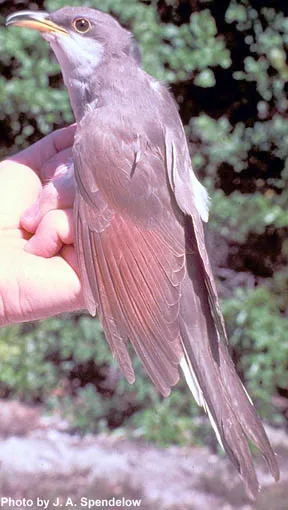
Image credit: United States Fish and Wildlife. Public domain.
The cuckoo is a feared hunter. If one of these birds lands on a tree branch, the hickory tussock caterpillars drop to the ground and only crawl back onto the tree when the bird has left.

Venomous Caterpillars: A Health Challenge

A major biomedical journal declared in June of 2020, "Caterpillar envenomation is a global health threat in the 21st century." Contact with caterpillar venom may be direct or indirect. Sometimes envenomated bristles may be carried by the wind. The bristles may be inhaled. They may pierce the eye. Health consequences range from mild dermatitis to life threatening kidney failure.
One of the most dangerous caterpillars in the world is the saddleback caterpillar. The BugGuide describes the geographic range of the saddleback: "Massachusetts south to Florida and west to eastern Missouri and Texas. Also found in Mexico and Central America, and possibly in Colombia."
Saddleback Caterpillar
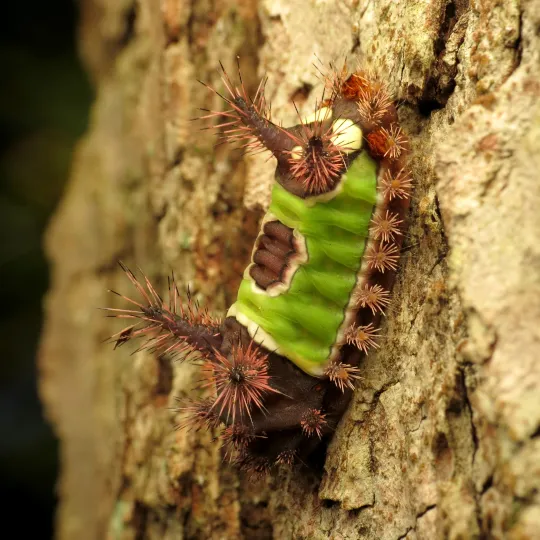
Image credit: Katja Schulz from Washington, D. C., USA. CC 2.0 license.
According to the University of Florida, Entomology and Hematology, the large spines on the saddleback have a 'hemolytic' venom, which acts much like the venom from a snake or a tarantula in destroying red blood cells.
Acharia Stimulea: Saddleback Caterpillar Moth
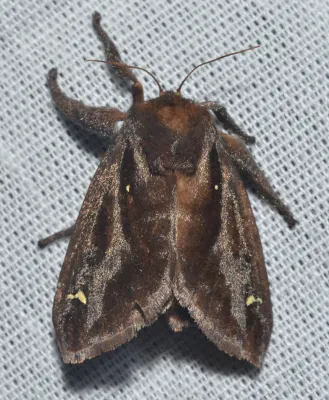
Image credit: Andy Reago & Chrissy McClarren. CC 2.0
The adult saddleback (the moth) has no venom and lives for about ten days. The adult mates within a couple of days after emerging from the cocoon, then the female lays eggs on the underside of a leaf. She deposits about 300 eggs in bunches of 30 or 40 and visits them during her brief life span.

Puss Caterpillar
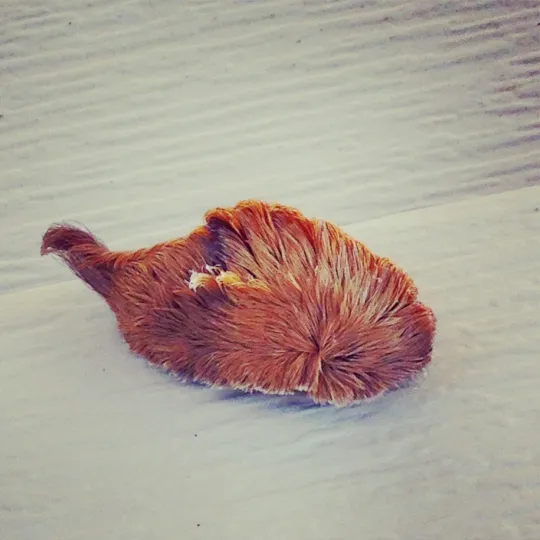
Image credit: Amizrachi CC 4.0 license
This caterpillar, more properly named Megalopyge opercularis, is seasonally ubiquitous in some parts of the United States. According to University of Florida Entomology and Nematology, the puss caterpillar is,"common in Florida but reaches its greatest abundance in Texas from Dallas southward in the western central part of the state." Recently, warnings were issued in Virginia that the furry caterpillar had been sighted there, also.
The caterpillar may also be found in Mexico and Central America. The lovely, soft looking 'hairs' on the caterpillar are actually venom-filled quills that embed in the skin.
The Southern Flannel Moth
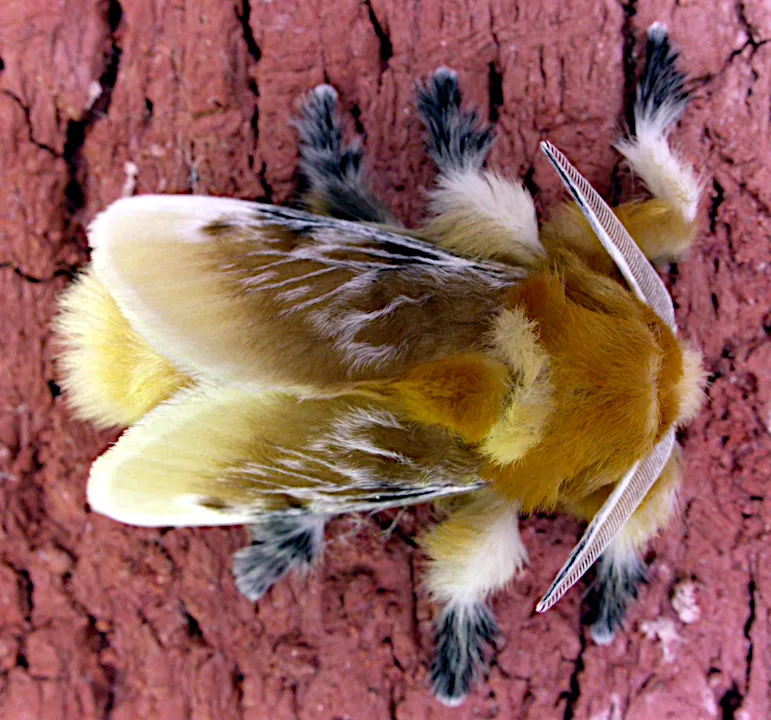
Image credit: Patrick Coin cc-by-sa-2.5
The puss caterpillar is the larval stage of the southern flannel moth. The adult moth does not appear to be venomous. All the literature I consulted warns against the larva (caterpillar), not the adult.
Reactions to the caterpillar's "sting", according to the American Association of Clinical Chemistry can include: " headaches, nausea, vomiting, intense abdominal distress, lymphadenopathy, lymphadenitis, and sometimes shock or respiratory stress." The composition of the venom is not clearly understand, so there is no antivenom.
Tachinid Fly, Parasitoid of the Puss Caterpillar
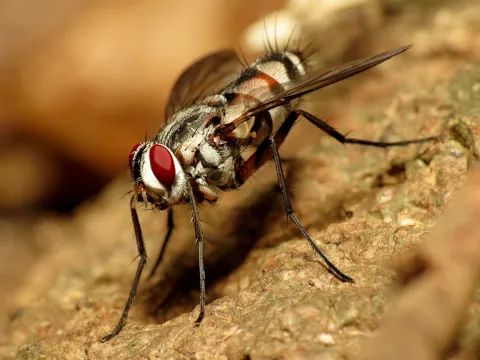
Image credit: Katja Schulz from Washington, D.C. Used under CC 2.0 license.
If you are tempted to call in an exterminator to rid yourself of this pest, stop! It seems the only natural enemies of the puss caterpillar are parasitic insects, such as flies and wasps. These lay their eggs inside the caterpillars. The larva from the parasitic insect feeds off the caterpillar and thus kills it. If you use a chemical insecticide to kill the caterpillar, you will also kill its natural enemies and likely have a greater infestation in the future.
Venomous Caterpillars Around the World
I've highlighted three venomous caterpillars in this blog. These may all be found in the United States. However, there are venomous caterpillars in other parts of the world. In Venezuela and Brazil, for example, there is a caterpillar commonly known as the 'assassin'. The more scientific name for this caterpillar is Lonomia obliqua.
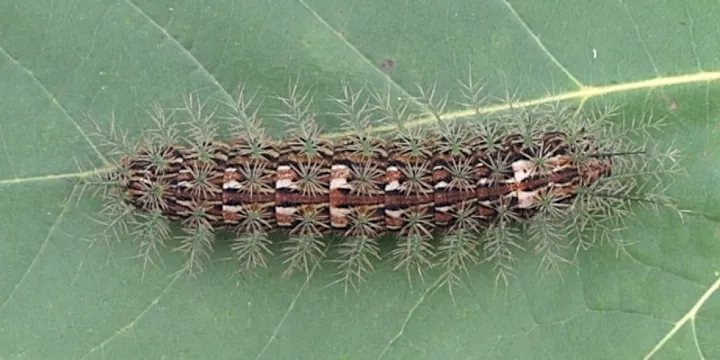
Image credit: Centro de Informações Toxicológicas de Santa Catarina. Public domain.
Contact with this caterpillar can lead to "...renal failure, internal and brain bleeding, and in severe cases, death." Fortunately there is an antidote, an antivenom. Unfortunately, there are other caterpillars in South American that have the same kind of lethal venom and for these the anti-venom may not work.

Conclusion
This excursion into venomous caterpillars began with the picture my granddaughter took on her Putnam County hike. As I read about toxic caterpillars I realized that many people may not be aware of the serious danger caterpillars can pose.
Besides venomous caterpillars, there's another class of caterpillar which can cause major distress and illness but which does not carry venom. Processionary caterpillars are among these.
However, this blog is long enough, so I will end here. I hope readers will regard caterpillars, no matter how attractive, with a certain respect. I know I will. Encounters of any kind may lead to great regret.



